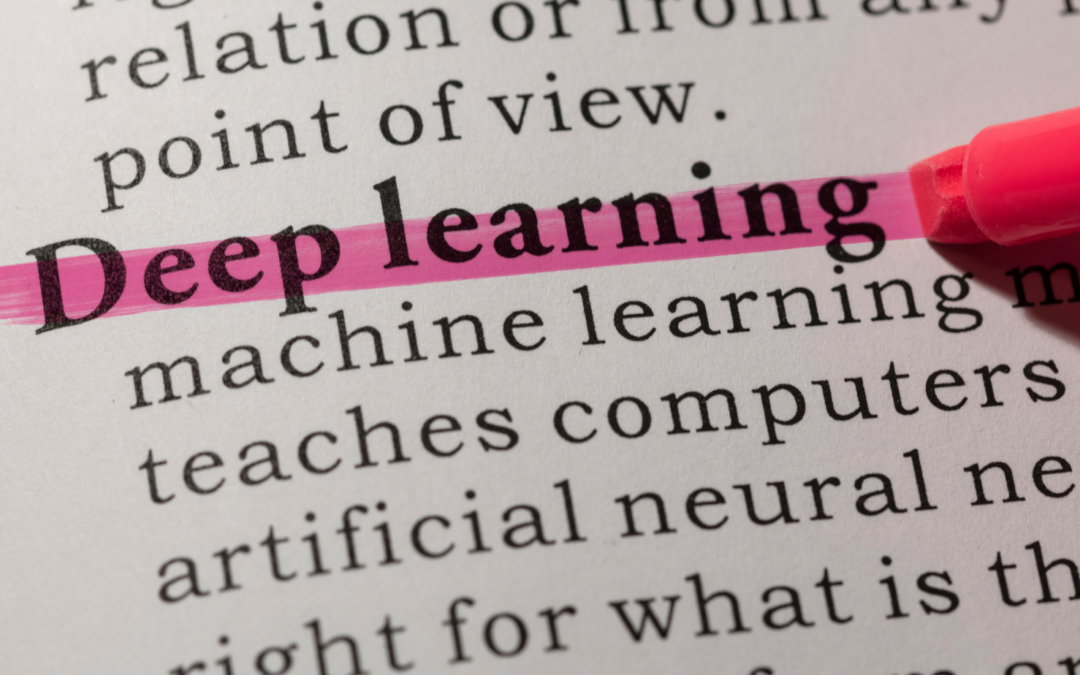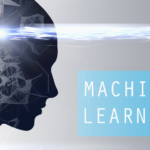Machine learning is an enchanting domain where algorithms stealthily shape our daily routines in ways we might not even realize. At its core, machine learning is a thrilling branch of artificial intelligence that empowers computers to learn all by themselves – no specific programming required.
I hope this article will be a personal expedition guide into the wilderness of machine learning. I’ll delve deep into indispensable theories and techniques forming the backbone of this field and throw light on how these adaptive computational methods are doing wonders across sectors ranging from healthcare to finance.
Besides giving you a robust understanding about types and applications of machine learning, we’ll also unravel future prospects linked with it and ethical considerations circling around its use.
Strap in for a mind-blowing odyssey through territories inhabited by neural networks, decision trees, random forests and so much more! You’d be surprised at how mathematical optimization techniques form the sturdy foundation upon which these seemingly intimidating structures stand tall.
So let’s embark on this stunning revelation together about this transformative technology! Continue reading for a wholesome comprehension over foundations of machine learning.
Key Takeaways
- Machine learning is a branch of artificial intelligence where computers can learn from data without explicit programming.
- There are three main types of machine learning: supervised, unsupervised, and reinforcement learning.
- Machine learning has applications in various industries like healthcare, finance, and marketing.
- Understanding the foundations of machine learning, including algorithms and theories, is crucial for effective and efficient learning.
- Regression and classification are important techniques in machine learning for predicting values or grouping data into categories.
- Decision trees and random forests help with decision – making by splitting data based on different features.
- Neural networks simulate functions of the human brain and are used in applications like image detection.
- Clustering helps group similar objects together using unsupervised learning.
- Dimensionality reduction simplifies data by reducing the number of features or variables while keeping relevant information intact.
What is Machine Learning?

Machine Learning refers to the field of study and practice that enables computers to learn from data and improve their performance in specific tasks without being explicitly programmed.
It involves various types such as supervised learning, unsupervised learning, and reinforcement learning, and finds applications in diverse industries ranging from finance to healthcare.
Definition
Machine learning is a piece of the bigger world of artificial intelligence. It’s all about making computer systems that can learn on their own. These smart systems get better and better by using data over time.
The heart of machine learning lies in math and optimization. By using data, these systems don’t just follow fixed steps but can improve through trial and error, much like how we humans do it! It feels cool to know that machines can also learn just like us, doesn’t it?.
Types of Machine Learning (supervised, unsupervised, reinforcement)
In the world of AI, three main types of machine learning stand out.
- Supervised Learning: This type has clear inputs and outputs. It learns from labeled data. It’s like having a guide who knows everything. For example, imagine we are dealing with an email system that learns which emails are spam and which are not. That’s supervised learning in action.
- Unsupervised Learning: This type learns from unlabeled data. Here, there is no guide or supervisor to correct it every time it gets something wrong. Let’s take the example of a baby trying to recognize animals without anyone teaching him what each animal is called.
- Reinforcement Learning: In this style of learning, our model or agent learns by making mistakes and then correcting them through a system of rewards and punishments.
Applications
We see machine learning in a lot of places today. It helps us in our daily lives and in many industries. The way it learns patterns about people, businesses, and other things is amazing.
Machine learning makes stuff like big language models possible. These models help computers understand and use human languages better. Computers can even see now with the help of computer vision – another wonder of machine learning! Speech recognition lets machines hear and understand what we say.
Have you ever had an email sorted as spam without doing anything? That’s also thanks to machine learning! Many fields are seeing great progress because of these technologies. Medicine, farming, marketing – they all get a boost from machine learning.
The Importance of Foundations in Machine Learning
Understanding the algorithms and theories behind machine learning is crucial for efficient and effective learning.
Understanding algorithms and theories
Understanding algorithms and theories is essential in machine learning. Algorithms are step-by-step instructions that help computers learn from data and make predictions or decisions.
Theoretical foundations provide the mathematical framework for these algorithms, allowing us to analyze their performance and behavior. By understanding how different algorithms work and the underlying theories behind them, we can develop more efficient and effective machine learning models.
For example, deep learning, a popular technique in machine learning, uses neural networks to solve complex problems by recognizing patterns in large amounts of unstructured data. Studying algorithms and theories gives us insights into how machines can learn from data and improve their predictive abilities.
Implications for efficient and effective learning
Efficiency and effectiveness are important when it comes to learning with machine learning. By understanding the foundations of machine learning, we can improve how we learn and make better decisions.
Machine learning algorithms and theories help us optimize our training data and improve decision-making. This means that we can become more efficient in our learning by automatically evaluating the best behavior for specific situations.
As technology advances, artificial intelligence and machine learning will continue to shape the future of teaching and learning, making it even more important for us to grasp these concepts for efficient and effective learning experiences.
Key Concepts and Techniques in Machine Learning
In this section, we will delve into the fundamental concepts and techniques of machine learning, including regression and classification, decision trees and random forests, neural networks, clustering, and dimensionality reduction.
Regression and classification
Regression and classification are two important techniques in machine learning. In regression, we use data to predict continuous values, like the price of a house or the temperature tomorrow.
On the other hand, classification involves grouping data into categories or labels. For example, we can use classification to predict whether an email is spam or not based on its content.
To perform regression and classification tasks, we rely on supervised machine learning algorithms like linear regression, logistic regression, and decision trees. These algorithms learn from labeled training data to make predictions about future unseen data points.
The accuracy of our models in both regression and classification tasks depends on the quality of our training data as well as feature selection and engineering. With accurate models, we can make better predictions and improve various applications such as predictive modeling, data analysis, pattern recognition, and more.
Decision trees and random forests
Decision trees and random forests are important concepts in machine learning. Decision trees are algorithms used for classification and regression tasks. They make decisions by following a tree-like structure, where each decision splits the data into branches based on different features.
Random forests, on the other hand, are ensemble learning algorithms comprised of multiple decision trees. They combine the output of these individual trees to improve prediction accuracy.
Random forests are effective in preventing overfitting, which is when a model becomes too closely tailored to the training data and performs poorly on new data. Overall, decision trees and random forests play an essential role in machine learning by helping us make accurate predictions and classifications based on given inputs.
Neural networks
Neural networks are a key concept in machine learning. They simulate functions of the human brain and are used in applications like image detection and recognition. Convolutional neural networks (CNNs) specifically detect visual patterns from raw images, while deep neural networks consist of interconnected neurons with multiple parameters and layers.
These networks help us understand how our brains work and enable machines to learn from data just like humans do. It’s fascinating to see how these artificial intelligence systems can process information and make decisions based on complex algorithms.
Clustering
Clustering is an important technique in machine learning that helps us group similar objects together. It’s like organizing things based on their similarities. The cool thing about clustering is that it uses unsupervised learning, which means we don’t need labeled examples.
Instead, we look for patterns and similarities among the data points. Through clustering algorithms, we can group data points that have similar values or attributes. This allows us to organize and make sense of large amounts of unlabelled data in a meaningful way.
So, when we hear about clustering in machine learning, it’s all about finding those groups based on similarity or dissimilarity among the data points!
Dimensionality reduction
Dimensionality reduction is an important concept in machine learning. It involves reducing the number of features or variables in a dataset. This simplifies the data while still keeping relevant information intact.
By removing multi-collinearity, dimensionality reduction improves the interpretation of models. It also has practical benefits, such as reducing processing time and storage space requirements.
Some commonly used techniques for dimensionality reduction include Principal Component Analysis (PCA), Linear Discriminant Analysis (LDA), and t-Distributed Stochastic Neighbor Embedding (t-SNE).

The Role of Data in Machine Learning
Data plays a crucial role in machine learning, from its collection and preprocessing to feature selection and engineering, as well as addressing bias and variance.
Collection and preprocessing
Collecting and preprocessing data is a crucial step in machine learning. Here’s what you need to know:
- Data collection is the first step before preprocessing in machine learning projects.
- Data cleansing helps remove any errors, duplicates, or irrelevant information from the dataset.
- Data normalization ensures that the data is scaled to a common range for accurate analysis.
- Data imputation involves filling in missing values using techniques like mean, median, or regression.
- Data quality assurance checks for inconsistencies and inaccuracies in the dataset.
- Data integration combines multiple datasets to create a unified source of information.
- Data wrangling involves transforming and reshaping the data to make it suitable for analysis.
- Data transformation applies mathematical functions to convert the data into a more manageable form.
- Data aggregation combines similar data points to provide summary statistics or insights.
Feature selection and engineering
Feature selection and engineering are essential processes in machine learning. They involve choosing a subset of features from the original set and transforming raw data into meaningful input for training a supervised learning model. Here are some key techniques used in feature selection and engineering:
- Filter-based methods: These techniques select features based on statistical measures like correlation or mutual information. By evaluating the relevance of each feature individually, filter-based methods can quickly identify the most informative ones.
- Wrapper-based methods: Unlike filter-based methods, wrapper-based techniques evaluate feature subsets using a machine learning algorithm. By testing different combinations of features, wrapper-based methods can find the optimal subset that maximizes model performance.
- Embedded methods: Embedded methods integrate feature selection into the machine learning algorithm itself. This means that the algorithm automatically selects relevant features during training, improving both efficiency and accuracy.
- Feature engineering: Feature engineering involves manipulat
Bias and variance
Bias and variance are important concepts in machine learning that can affect the accuracy of our models. Bias refers to the error caused by overly simplifying our algorithms, such as using a linear regression model when the relationship between variables is more complex.
On the other hand, variance refers to the error caused by overcomplicating our models and fitting them too closely to the training data.
The amount of data being created every day has implications for bias and variance in machine learning. With larger datasets, there’s a higher chance of encountering biased data or outliers that can increase both bias and variance.
It’s essential to understand this tradeoff – models with high bias oversimplify the underlying patterns in the data distribution, while models with high variance tend to overfit and have less generalization capability.
To avoid these errors, we need to strike a balance between bias and variance. This involves selecting appropriate algorithms and properly preprocessing our data to remove any biases or outliers.
The Future of Machine Learning
The future of machine learning holds exciting advancements in technology and important ethical considerations. Read on to discover the potential impact and possibilities that lie ahead in this rapidly evolving field.
Advancements in technology
Advancements in technology have greatly contributed to the rapid growth and development of machine learning. Artificial intelligence, including neural networks, data analysis, cognitive computing, automation, predictive modeling, natural language processing, data mining, and pattern recognition, has revolutionized the field.
These advancements have made it possible for machines to learn from vast amounts of data and make accurate predictions or decisions. As a result, machine learning algorithms have become more sophisticated and powerful than ever before.
With ongoing progress in algorithm development and computational power, we can expect even more exciting advancements in the future that will continue to shape the world of machine learning.
Ethical considerations
Ethical considerations play a crucial role in machine learning and artificial intelligence. As decision-making is increasingly delegated to algorithms, it becomes essential to address ethical principles and guidance for these technologies.
One significant concern is the presence of bias in AI systems, which can occur due to biased assumptions or unequal considerations of data sets during algorithm development. This bias can result in discriminatory outcomes, inaccurate decisions, or even privacy violations.
Additionally, questions about data ownership, pricing transparency, and privacy protection arise when implementing machine learning models. It is vital for implementers to take responsibility for accurately recording and reporting model performance metrics while proactively addressing potential biases and ensuring fair treatment for all individuals affected by AI-based decisions.
Conclusion
In conclusion, “Understanding The Foundations Of Machine Learning” is a comprehensive course that equips participants with the knowledge and skills to delve into the world of machine learning.
By exploring key concepts, techniques, and applications, learners gain a solid understanding of how machines can learn from data. With advancements in technology and ethical considerations on the horizon, this course provides a valuable foundation for those interested in the future of artificial intelligence.




